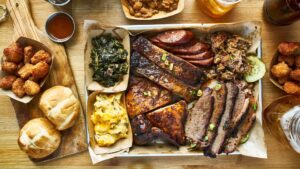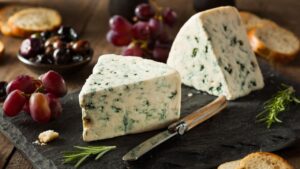Enchiladas and fajitas are two popular Mexican dishes that have become widely known around the world. They are both delicious and versatile and can be found in many different variations in various parts of the world. Enchiladas are made from tortillas filled with various ingredients and then covered in chili sauce and cheese, while fajitas consist of grilled meat, vegetables, and a variety of seasonings that are wrapped in a tortilla.
The purpose of this article is to explore the differences between enchiladas and fajitas, including their ingredients, preparation, nutritional value, flavor, and texture. By the end of the article, readers should have a better understanding of these two iconic Mexican dishes and be able to choose which one to make or order based on their preferences.
What are Enchiladas?
Enchiladas are a traditional Mexican dish that is typically made from tortillas filled with a variety of ingredients, such as chicken, beef, or cheese, and then covered in a chili sauce and cheese before being baked in the oven. There are many variations of enchiladas, and they can be made with different types of tortillas, fillings, and sauces.
The history of enchiladas can be traced back to the Mayan and Aztec civilizations in Mexico, where corn tortillas were a staple food. Enchiladas were originally made with just tortillas and chili sauce, but over time, people started adding different fillings to them.
The main ingredients used in enchiladas include tortillas, meat, vegetables, cheese, and chili sauce. Depending on the type of enchilada, other ingredients such as beans, rice, or sour cream may also be used.
Enchiladas vary by region in Mexico and also have been adopted in different parts of the world. For example, in Mexico City, enchiladas are typically made with a red chili sauce and filled with shredded chicken, while in Oaxaca, they are filled with cheese and topped with a black mole sauce.
What are Fajitas?
Fajitas are a Tex-Mex dish that consists of grilled meat, vegetables, and a variety of seasonings, such as chili powder, cumin, and garlic, that are wrapped in a tortilla. They are often served with toppings such as cheese, sour cream, and guacamole.
The history of fajitas is a bit more unclear, but it is believed that they originated in the Rio Grande Valley in Texas in the 1930s. Originally made with skirt steak, which was a cheap cut of meat, fajitas were a popular dish among Mexican ranch workers and soon became a staple in Tex-Mex cuisine.
The main ingredients used in fajitas include meat (usually beef or chicken), bell peppers, onions, and a variety of seasonings, such as chili powder, cumin, and garlic. The meat and vegetables are often grilled or cooked in a cast iron skillet to give them a smoky, charred flavor.
Like enchiladas, fajitas also vary by region in Mexico and around the world. In Mexico, fajitas are often made with arrachera, a cut of beef similar to skirt steak, while in the United States, chicken and shrimp fajitas are also popular.
Comparison Enchiladas vs Fajitas
Preparation
To prepare enchiladas, tortillas are first softened by being dipped in hot oil or a chili sauce. They are then filled with the desired ingredients, such as meat, beans, or vegetables, and rolled up. The enchiladas are then covered in a chili sauce and cheese and baked in the oven until the cheese is melted and bubbly.
To prepare fajitas, the meat, and vegetables are marinated in a mixture of lime juice, oil, and spices for several hours. They are then grilled or cooked in a cast-iron skillet until the meat is browned and the vegetables are tender. The filling is then wrapped in a tortilla, along with any desired toppings.
One of the main differences in preparation between enchiladas and fajitas is the cooking method. Enchiladas are typically baked in the oven, while fajitas are grilled or cooked in a skillet. Additionally, the ingredients in enchiladas are rolled up inside the tortillas, while the ingredients in fajitas are placed on top of the tortilla and wrapped around them.
To prepare enchiladas, you will need an oven, a baking dish, and a blender or food processor to make the chili sauce. To prepare fajitas, you will need a grill or cast-iron skillet, and a mixing bowl to marinate the meat and vegetables.
Nutritional Value
The nutritional value of enchiladas and fajitas can vary depending on the ingredients used and the method of preparation. Generally, enchiladas are higher in calories and fat due to the cheese and chili sauce, while fajitas are a leaner option due to the use of grilled meat and vegetables. However, both dishes can be made healthier by using leaner cuts of meat, whole-grain tortillas, and lighter toppings.
Some factors that can affect the nutritional value of enchiladas and fajitas include the type of meat used, the amount of cheese and toppings, and the cooking method.
While fajitas are generally considered to be a healthier option than enchiladas due to their leaner ingredients, it ultimately depends on how the dish is prepared and what ingredients are used.
Flavor and Texture
Enchiladas and fajitas have distinct flavors and textures. Enchiladas are typically savory and slightly spicy, with a soft texture from the tortilla and filling. Fajitas, on the other hand, have a smoky and charred flavor from the grilled meat and vegetables, and a crunchy texture from the tortilla and toppings.
Enchiladas are often made with a chili sauce that can range from mild to spicy, depending on the type of chili used. Fajitas are seasoned with a variety of spices, such as chili powder and cumin, and can be customized to be more or less spicy.
Enchiladas have a soft texture due to the tortilla being soaked in the sauce and baked, while fajitas have a crispy texture from the grilled meat and vegetables. The toppings on fajitas, such as guacamole and sour cream, also add a creamy texture to the dish.
Serving Suggestions
Enchiladas are often served with rice and beans on the side, while fajitas are typically served with rice, beans, and a variety of toppings such as salsa, guacamole, and sour cream.
Some popular sides and toppings for enchiladas include rice, beans, avocado, and fresh cilantro. Fajitas can be served with a variety of toppings, such as grilled onions and peppers, shredded cheese, and pico de gallo.
Enchiladas are typically served on a plate and covered in sauce and cheese, while fajitas are often served on a sizzling platter with toppings on the side. Both dishes can be garnished with fresh herbs and lime wedges for added flavor and presentation.
Conclusion
Enchiladas and fajitas are both delicious Mexican dishes with distinct differences in their preparation, ingredients, and flavors. Enchiladas are typically baked in the oven, filled with ingredients, and covered in a chili sauce, while fajitas are grilled or cooked in a skillet and wrapped in a tortilla with toppings.
Whether to choose enchiladas or fajitas ultimately depends on personal preference and dietary restrictions. Enchiladas are a comforting and filling option, while fajitas are a leaner and smoky option with a variety of toppings. Both dishes can be made healthier with the use of leaner ingredients and lighter toppings.





